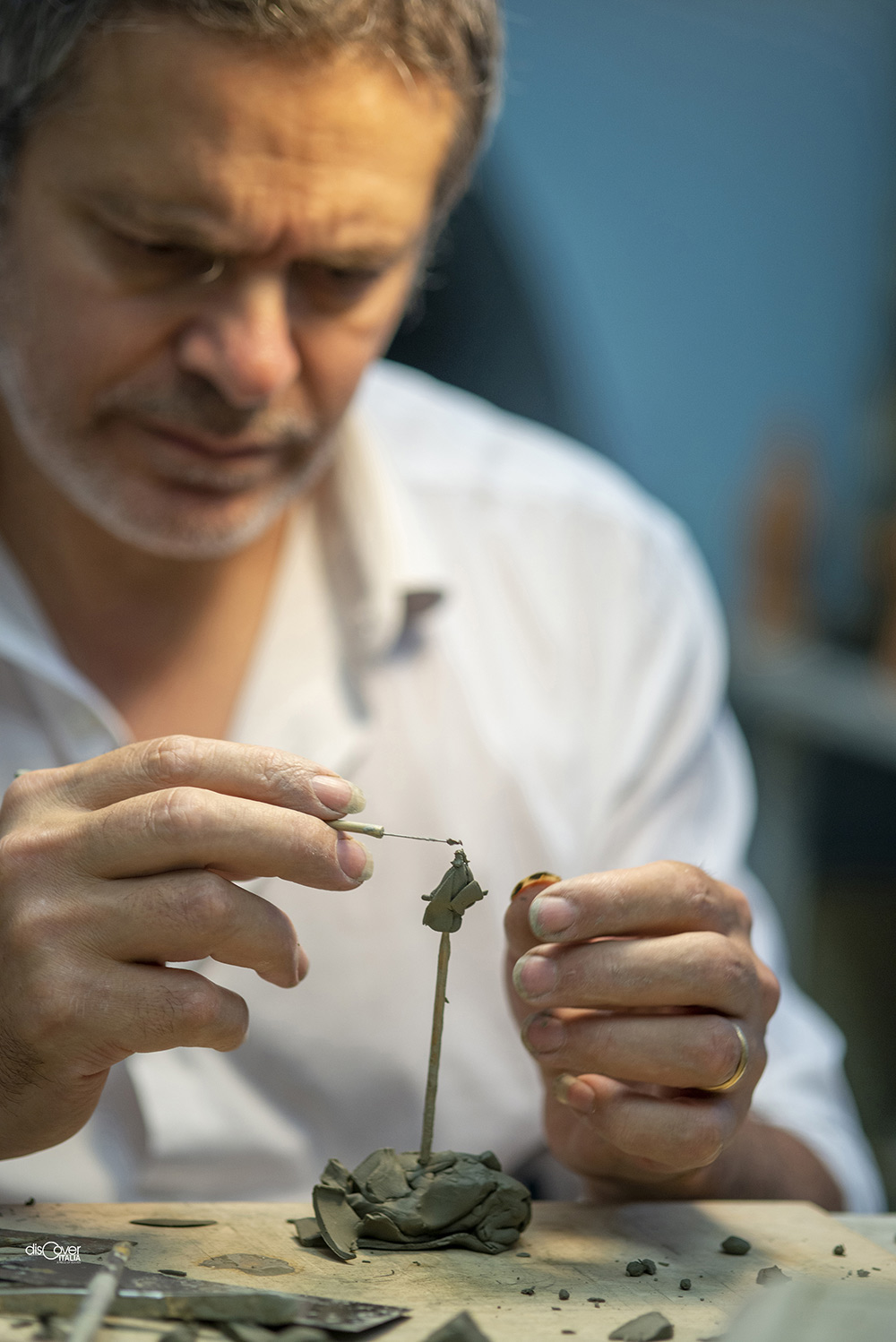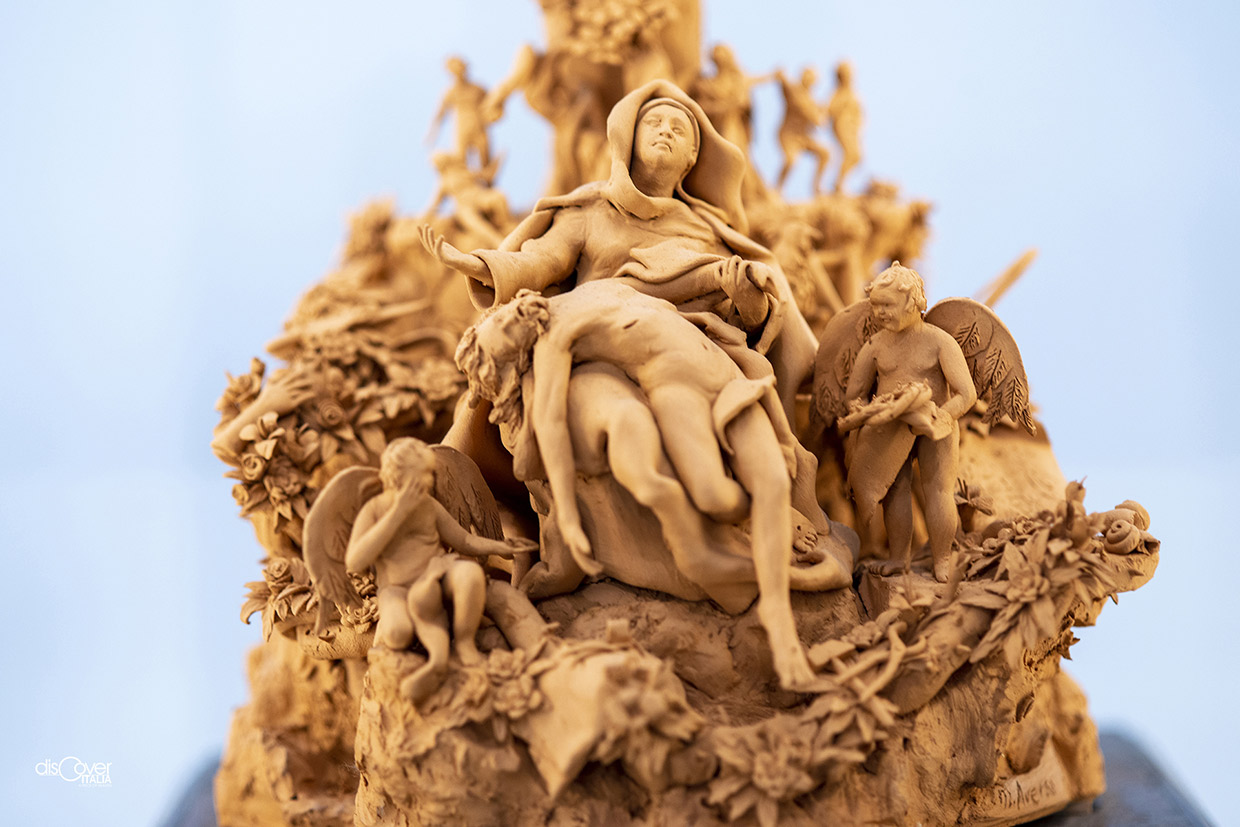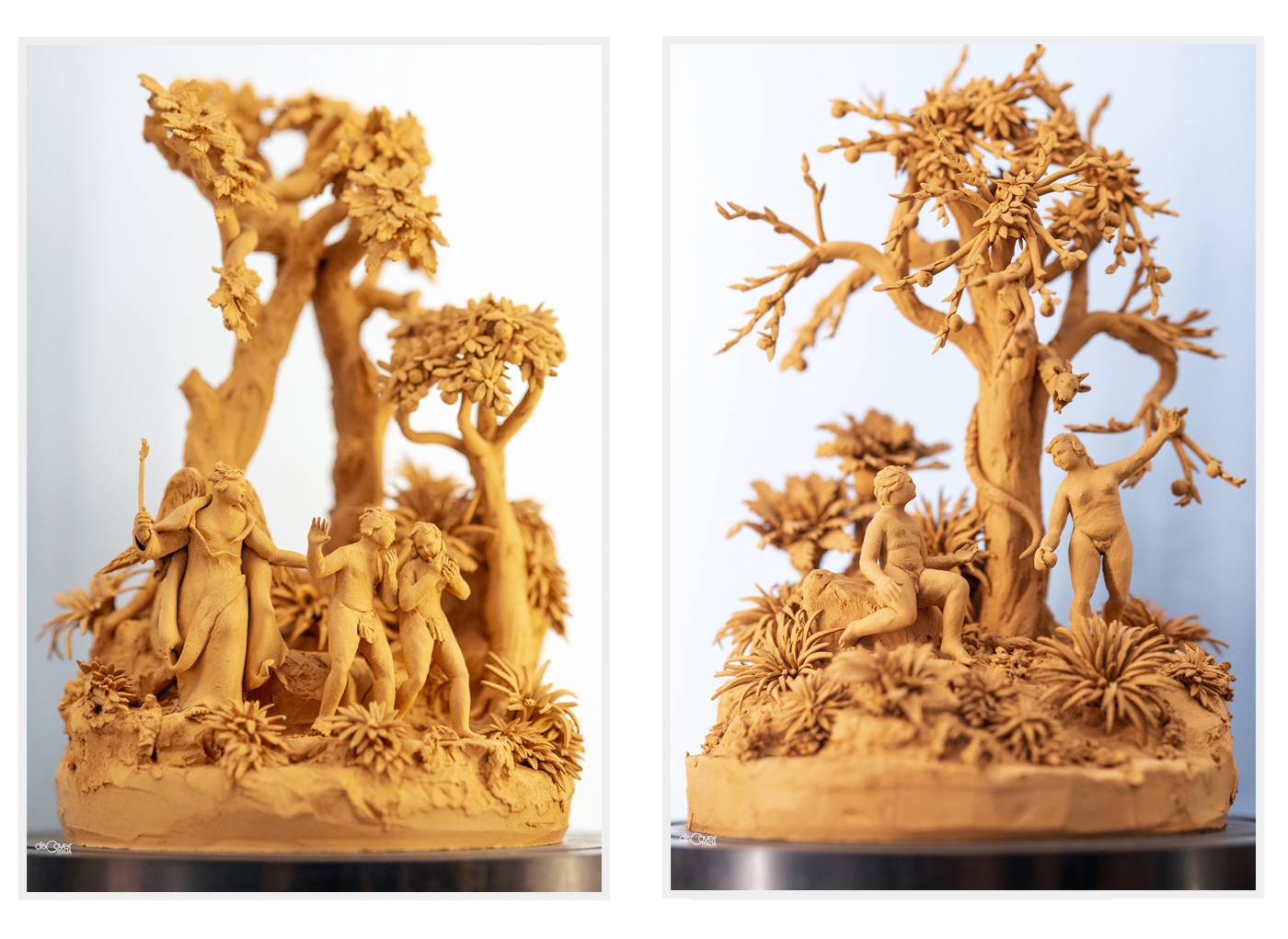His future seemed to be already written. The tradition established over the centuries entrusted to him as well the task of carrying on the furnace, like all the other young people belonging to families engaged in the clay business.
 A natural path that began as kids, even before finishing the school, when the heritage of skills handed from generation to generation was however mostly already acquired. And Marcello, with that surname Aversa linked to the biscuit of Maiano of the XV century, was no exception. At that time, He was probably thinking the same. Even if his passion for the clay was not only addressed in the typical production of bricks that from the fifteenth century made his hamlet famous, a small fraction of Sant’Agnello, in Sorrento’s peninsula.
A natural path that began as kids, even before finishing the school, when the heritage of skills handed from generation to generation was however mostly already acquired. And Marcello, with that surname Aversa linked to the biscuit of Maiano of the XV century, was no exception. At that time, He was probably thinking the same. Even if his passion for the clay was not only addressed in the typical production of bricks that from the fifteenth century made his hamlet famous, a small fraction of Sant’Agnello, in Sorrento’s peninsula.
Family teachings gave him confidence with the modelling material and mastery of cooking techniques. But Marcello had other ideas on how to use those techniques. Fruit of a talent He still didn’t fully know to have but that a teacher of art education, Antonietta Tagliareni, already recognized and tried to encourage.
Marcello had always liked the Christmas crib. As a kid, He stood looking at it for hours, charmed by that timeless universe, full of suggestions and inspirations, that drew sense and valor from “Bambinello” (Jesus Christ), the smaller figure, core of the entire scene. That interest brought him into crafting huge crib’s set: «They were structures of up to one hundred square meters – he tells- made with traditional materials of the “scogli”, cork and wood, in which We placed dressed shepherds. Little by little, I’ve started adding houses, traditionally made with tuff rocks, tiles and roofs made in terracotta, new details, reconnected with Maiano. Then, the terracotta moved into cork scogli too, to which it was taking more and more space. At that time, we were still using shepherds from Naples, that we bought in San Gregorio Armeno. But with the shrinking of the cribs, now mainly made of terracotta, I started making my own shepherds».

IN SAN GREGORIO ARMENO
Marcello Aversa kept on going to San Gregorio Armeno, but trying to sell shepherds instead of buying. From those walks to Naples, He preserved a box. Inside it, there are shepherds and animals of the crib safely kept in wadding. Of minuscular size, perfect proportions, meticulous attention to every small detail. Like every work of his still are. And yet, they didn’t find any success in Naples: «They did the round trip with me on the “Circumvesuviana” – remembers- because it was very hard for me to sell those. They were too small for them even as “moschelle”, which are pieces for small cribs, around four centimeters. Mine, of just one centimeter, weren’t understood. So, I started working on cribs of miniatures entirely made by me ». And focusing on the essence of the cribs, Marcello started «over personal curiosity» biblical readings and theological insights that have become a solid speculative basis and creative inspiration for his most recent works, of recent years.

THE CROSS OF THE CATHEDRAL
He already brought some back to Milan, after an exhibition in the city, and are placed with care in the laboratory in via Sersale, few meters from the Cathedral of Sorrento,keeper of artworks that for two years has also been displaying Vita semper vincit, one of the most representative work of this phase of the artistic path of Aversa. Constantly nourished from the research of meaning and love for the traditions of its land. From those, Marcello recovered the story of the Easter’s crib, which was already taking place in Naples in the 15th century, in convents, with scenes from the old and new testament. The artist’s rework made the wood of the Cross, transformed in a tree dressed in leaves of different plant species, the majestic and harmonious support of plastic representations borrowed from the Bible and the life of Christ, of which it proposes highlights from the Nativity to the Passion,until the Resurrection, extreme synthesis «that is the victory of the life».

The Cross of Terracotta of Sorrento’s cathedral is made of forty thousand pieces. Shaped, one by one, with such a rich amount of details that littleness does not deny, rather exalts. Dozens of moving figures and putti (children), with delicate features and expressive faces, surrounded by an extraordinarily flourishing nature, magnificent Eden of strongly realistic connotations even if loaded of symbolic elements. Features that share, in the particularity and uniqueness of each, the crosses/trees to which Marcello has dedicated himself in the last few years, imbuing them with all the mastery the artisan gained over time, together with the artist's complex and ever-changing creative elaborations. Works that are also displayed in the Cathedral of Mirandola in Modena and in the Scuola Grande di San Teodoro in Venice.
Because Aversa's work, of universal scope although deeply linked to the cultural identity and historical heritage of the master's land, has already been appreciated in the rest of Italy and abroad for several years, where it has been the protagonist of various exhibitions and gratified by important awards.
THE CLAY AND THE PROJECT OF MAIANO
Feedback that have certainly encouraged the artist, but that have not affected the humility and authenticity of Marcello who, after twenty-five years of constant progress, continues to face every tiny piece of clay with the smile and simplicity of the same child that gazes at the Christmas crib. The same gaze with which one finds oneself observing, amazed by their delicate complexity, the small figures, the putti, the hundreds of very delicate leaves that, still gray earth just modeled, populate the welcoming shop in the heart of Sorrento. Many small works, waiting for the firing that will give them the red color of terracotta that Aversa never wanted to give up, because «it is the original color that brings me back to the Maiano kilns, and I find it elegant».
Yes, Maiano. Since he witnessed the depopulation of many artisan shops in the hamlet, the progressive abandonment of kilns and, above all, the lack of young people interested in carrying on that as the other typical crafts of his land, Aversa has begun to imagine how to restore life, future, perspectives for that place, which still holds great potential. "We must find a way to attract young people, using their language, making them understand the value of that heritage and offer them the opportunity to regenerate it, creating a future here", is the idea that has begun to take shape. Meanwhile, he continues with his usual dedication to composing the new pieces destined for the upcoming exhibition for his twenty-five years of activity. From Maiano's bricks to today's miniatures, in the search of infinite shapes of terracotta.



Comments powered by CComment